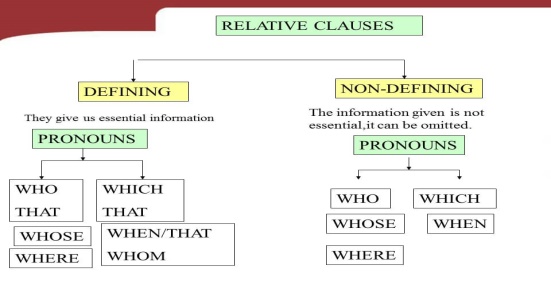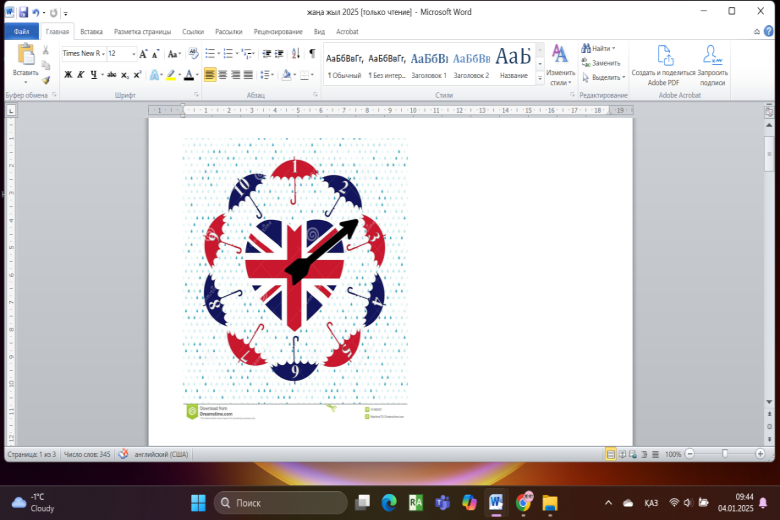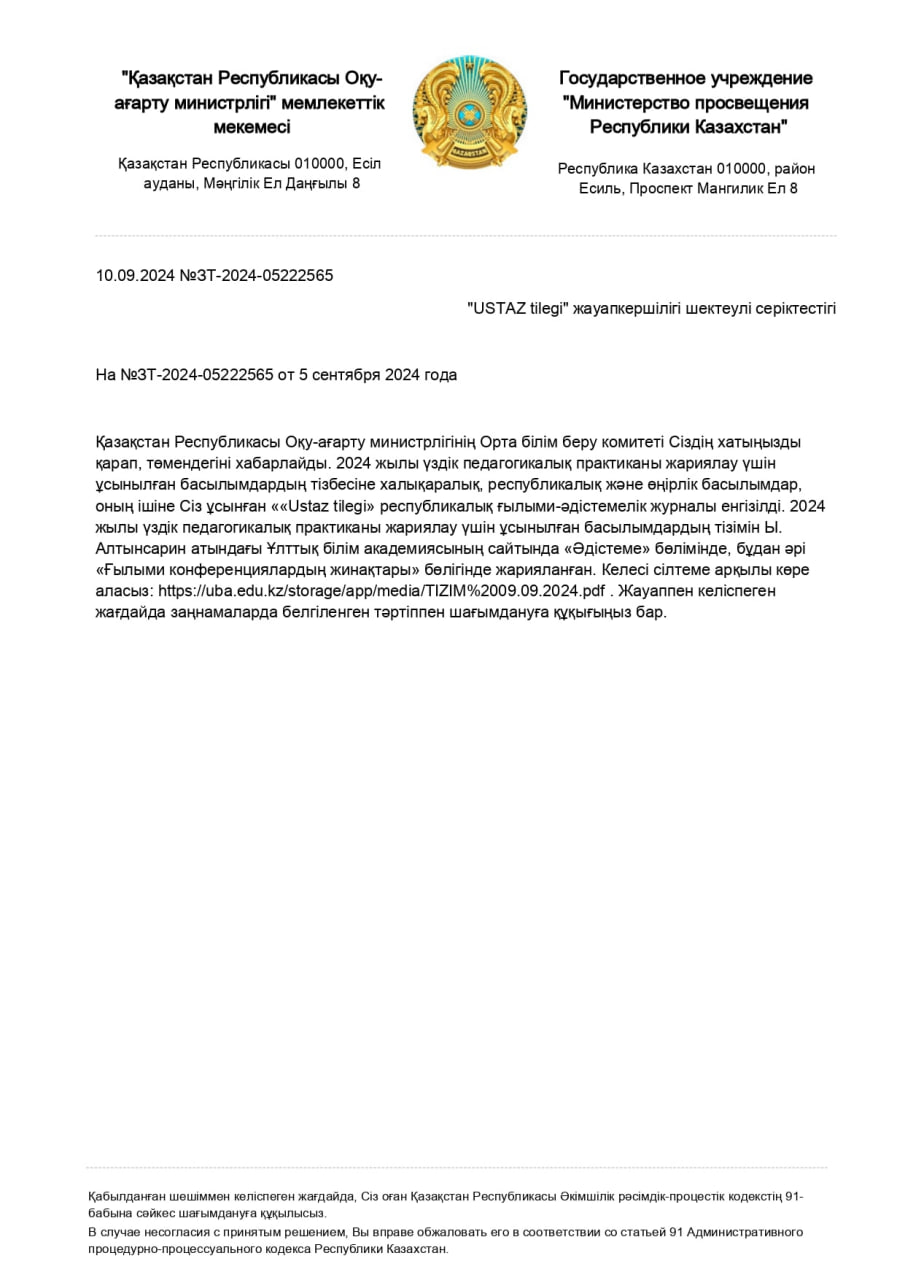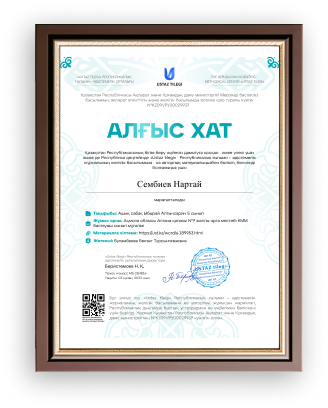
Short term planTerm 3
|
Unit 7Music and films. |
Lesson 71 |
||
|
School 137 |
|
||
|
Teacher name: Mirzakulova A |
|
||
|
Date: 27.02.2025 |
|
||
|
Grade: 9 Ә |
Number present: |
absent: |
|
|
Lesson title |
Use of English: relatives |
||
|
Learning objectives |
9.5.4.1 use style and register to achieve appropriate degree of formality in a growing variety of written genres on a range of general and curricular topics 9.6.6.1 use a wide variety of relative, demonstrative, indefinite, quantitative]of pronouns and reflexive pronoun structures on a wide range of familiar general and curricular topics |
||
|
Lesson objectives |
Learners will be able to: - To present relatives -To practise relative clauses -To present and practise some/any/no/every & compounds |
||
|
Plan |
|||
|
Stages / Time |
Teachers’ actions |
Students’ actions |
Assessment criteria |
Resources |
|
Beginning of the lesson 5 min |
1.Greeting. Ask about the weather. Warming-up Value links "Independence and patriotism" Respect the state symbols of Kazakhstan, understand the meaning of public holidays The teacher sets the lesson objectives, letting students know what to anticipate from the lesson. Lead – In
|
Students' attention is drawn to the lesson. Determines the topic and purpose of the lesson Learners talk about favourite dayprevious lesson vocabulary Students say different words from the picture and count one to hundred |
At the organization moment T tries to award active Ss. “Good job! Well done!”
|
Pictures
PPT |
|
Middle of the lesson Presentation part. 35 min |
Ex:1 P:78 Explain that we use relatives (who, which, whose, when, where, why) to introduce relative clauses to identify the noun in the main clause. Explain that we use who/that instead of subject pronouns to talk about people; we use which/that to talk about objects or animals; we use whose instead of possessive adjectives to talk about possession and we use where/when/why to talk about place/time/reason. Explain the difference between defining and non- defining relative clauses.g. defining = give essential information, non-defining = give extra Ex:2 P:78 Explain the task. Give Ss time to complete the task and then check Ss' answers. Ex: 3 P:78 • Explain the task. Give Ss time to complete it. Check Ss' answers Differentiation: «Verbal support» method is used to help Students ue new words in the text.
Ex: 4 P:78 Read the table aloud and ask Ss to copy it into their notebooks. Explain the task and give Ss time to complete it. Check Ss' answers around the class. |
Studentsread the theory. Say the examples in your language. ANSWERS: Students own answer. Students fill the gaps. Answer the question. Rewrite them using commas where needed. ANSWERS: 1 isn't that the café where they filmed Amelie? (defining) 2 The advert which won the award was filmed near my house. (defining) 3 Ben is the boy whose mother is an actress. (defining) 4 That is the actor who starred in The Tourist. (defining) 5 George Clooney, who is in the film Gravity, is very handsome. (non-defining) 6 Mr Harris, who came up with the idea for the shop, is Canadian. (non-defining) 7 The photographs which I took in Hollywood have been developed. (delining) 8 August is the month when she was born. (defining) 9 Amy, who works at the advertising agency, is my cousin. (non-defining) 10 That's the reason why he loves comedy films so much. (defining) Students join the sentences. Answer the question. ANSWERS: 1 Alfred Hitchcock, who was a film director, made over fifty films. (non-defining) 2 Mark, whose father is shooting the advertisement, phoned me today. (non-defining) 3 That is the shop where they sell autographed memorabilia. (defining) 4 I met a girl last night whose mother is a well-known actress. (defining) 5 My mum gave me her wedding dress, which belonged to her mother. (non-defining) 6 Emily, whose mum is a singer, invited me to a private concert. (non-defining) 7 Brad Pitt, who starred in Ocean's Eleven, is a philanthropist. (non-defining) 8 That's the restaurant where all the dishes are named after actors. (defining) Students read the table. Choose the correct item. ANSWERS: 1 any 2 Everyone 3 something 4 no 5 somewhere |
Descriptor: - read the theory -say the examples in your language Total: 2 point
Descriptor: -fill the gaps - rewrite them using commas where needed Total: 2 point Descriptor: - join the sentences - answer the question. Total: 1 point
Descriptor: - read the table - choose the correct item Total: 1 point -Make CCQ questions Yes / No |
Cards Student’s book Worksheets Student’s book |
|
End of the lesson 5 min |
Giving the hometask. Ex: 3 P:23 wb Self-reflectio |
Ss evaluate each other and encourage classmate with phrases like: Well done! Brilliant! Good job! I like it! |
Poster Success |
|
жүктеу мүмкіндігіне ие боласыз
Бұл материал сайт қолданушысы жариялаған. Материалдың ішінде жазылған барлық ақпаратқа жауапкершілікті жариялаған қолданушы жауап береді. Ұстаз тілегі тек ақпаратты таратуға қолдау көрсетеді. Егер материал сіздің авторлық құқығыңызды бұзған болса немесе басқа да себептермен сайттан өшіру керек деп ойласаңыз осында жазыңыз
Use of English: Relatives 9 grade Lesson plan
Use of English: Relatives 9 grade Lesson plan
Short term planTerm 3
|
Unit 7Music and films. |
Lesson 71 |
||
|
School 137 |
|
||
|
Teacher name: Mirzakulova A |
|
||
|
Date: 27.02.2025 |
|
||
|
Grade: 9 Ә |
Number present: |
absent: |
|
|
Lesson title |
Use of English: relatives |
||
|
Learning objectives |
9.5.4.1 use style and register to achieve appropriate degree of formality in a growing variety of written genres on a range of general and curricular topics 9.6.6.1 use a wide variety of relative, demonstrative, indefinite, quantitative]of pronouns and reflexive pronoun structures on a wide range of familiar general and curricular topics |
||
|
Lesson objectives |
Learners will be able to: - To present relatives -To practise relative clauses -To present and practise some/any/no/every & compounds |
||
|
Plan |
|||
|
Stages / Time |
Teachers’ actions |
Students’ actions |
Assessment criteria |
Resources |
|
Beginning of the lesson 5 min |
1.Greeting. Ask about the weather. Warming-up Value links "Independence and patriotism" Respect the state symbols of Kazakhstan, understand the meaning of public holidays The teacher sets the lesson objectives, letting students know what to anticipate from the lesson. Lead – In
|
Students' attention is drawn to the lesson. Determines the topic and purpose of the lesson Learners talk about favourite dayprevious lesson vocabulary Students say different words from the picture and count one to hundred |
At the organization moment T tries to award active Ss. “Good job! Well done!”
|
Pictures
PPT |
|
Middle of the lesson Presentation part. 35 min |
Ex:1 P:78 Explain that we use relatives (who, which, whose, when, where, why) to introduce relative clauses to identify the noun in the main clause. Explain that we use who/that instead of subject pronouns to talk about people; we use which/that to talk about objects or animals; we use whose instead of possessive adjectives to talk about possession and we use where/when/why to talk about place/time/reason. Explain the difference between defining and non- defining relative clauses.g. defining = give essential information, non-defining = give extra Ex:2 P:78 Explain the task. Give Ss time to complete the task and then check Ss' answers. Ex: 3 P:78 • Explain the task. Give Ss time to complete it. Check Ss' answers Differentiation: «Verbal support» method is used to help Students ue new words in the text.
Ex: 4 P:78 Read the table aloud and ask Ss to copy it into their notebooks. Explain the task and give Ss time to complete it. Check Ss' answers around the class. |
Studentsread the theory. Say the examples in your language. ANSWERS: Students own answer. Students fill the gaps. Answer the question. Rewrite them using commas where needed. ANSWERS: 1 isn't that the café where they filmed Amelie? (defining) 2 The advert which won the award was filmed near my house. (defining) 3 Ben is the boy whose mother is an actress. (defining) 4 That is the actor who starred in The Tourist. (defining) 5 George Clooney, who is in the film Gravity, is very handsome. (non-defining) 6 Mr Harris, who came up with the idea for the shop, is Canadian. (non-defining) 7 The photographs which I took in Hollywood have been developed. (delining) 8 August is the month when she was born. (defining) 9 Amy, who works at the advertising agency, is my cousin. (non-defining) 10 That's the reason why he loves comedy films so much. (defining) Students join the sentences. Answer the question. ANSWERS: 1 Alfred Hitchcock, who was a film director, made over fifty films. (non-defining) 2 Mark, whose father is shooting the advertisement, phoned me today. (non-defining) 3 That is the shop where they sell autographed memorabilia. (defining) 4 I met a girl last night whose mother is a well-known actress. (defining) 5 My mum gave me her wedding dress, which belonged to her mother. (non-defining) 6 Emily, whose mum is a singer, invited me to a private concert. (non-defining) 7 Brad Pitt, who starred in Ocean's Eleven, is a philanthropist. (non-defining) 8 That's the restaurant where all the dishes are named after actors. (defining) Students read the table. Choose the correct item. ANSWERS: 1 any 2 Everyone 3 something 4 no 5 somewhere |
Descriptor: - read the theory -say the examples in your language Total: 2 point
Descriptor: -fill the gaps - rewrite them using commas where needed Total: 2 point Descriptor: - join the sentences - answer the question. Total: 1 point
Descriptor: - read the table - choose the correct item Total: 1 point -Make CCQ questions Yes / No |
Cards Student’s book Worksheets Student’s book |
|
End of the lesson 5 min |
Giving the hometask. Ex: 3 P:23 wb Self-reflectio |
Ss evaluate each other and encourage classmate with phrases like: Well done! Brilliant! Good job! I like it! |
Poster Success |
|

шағым қалдыра аласыз


















